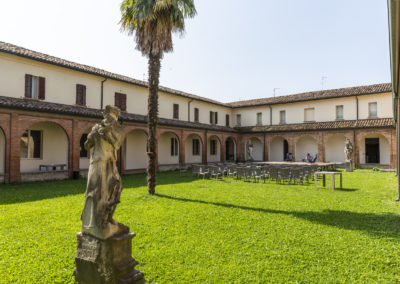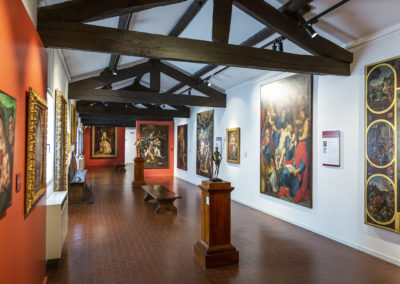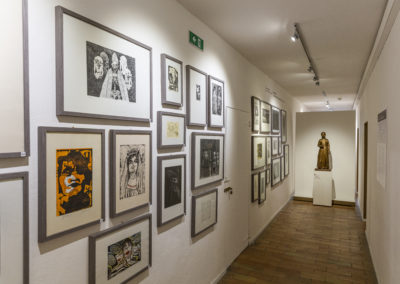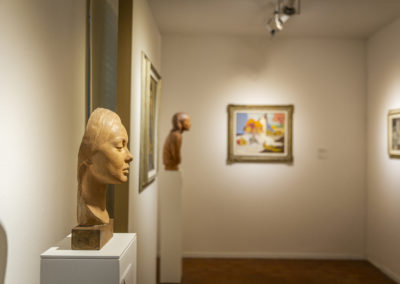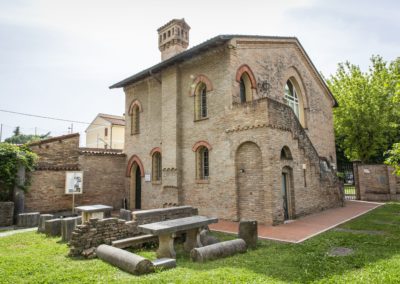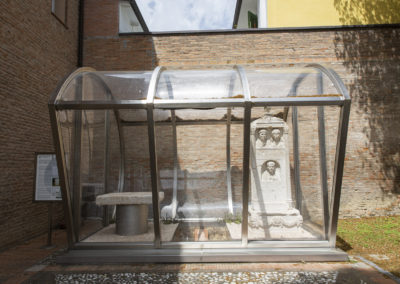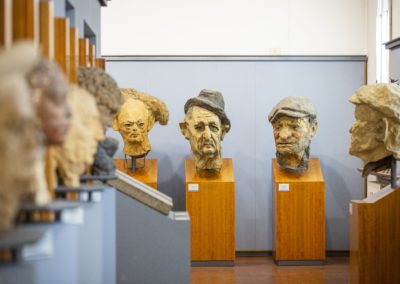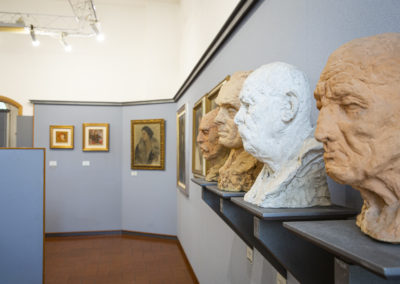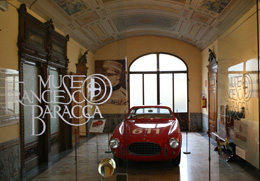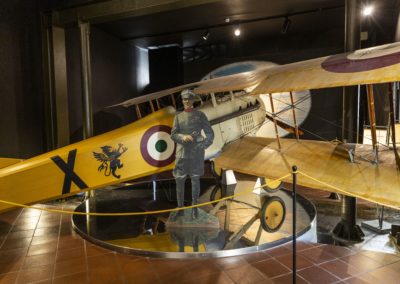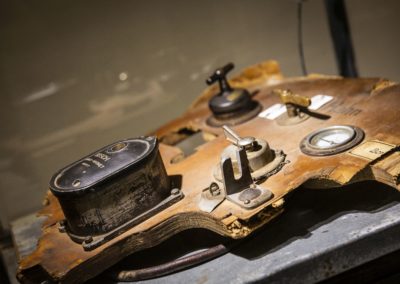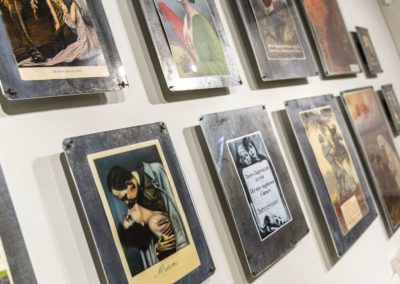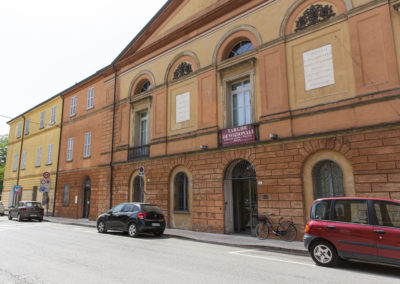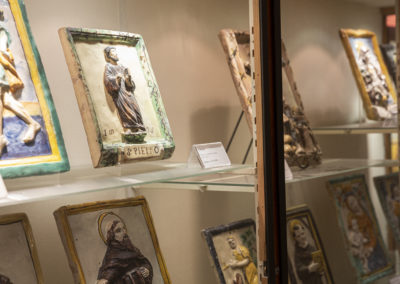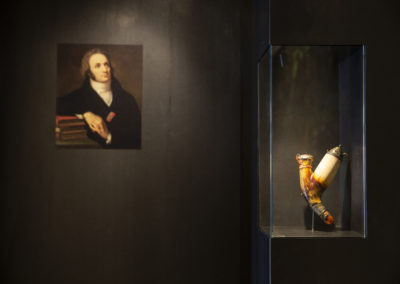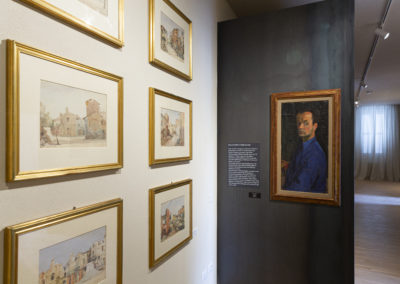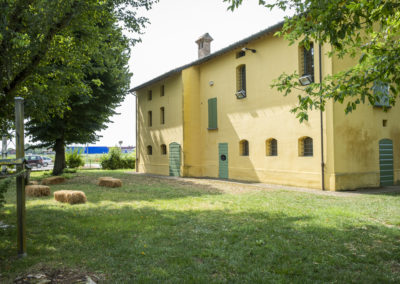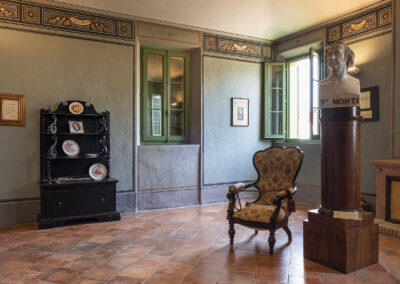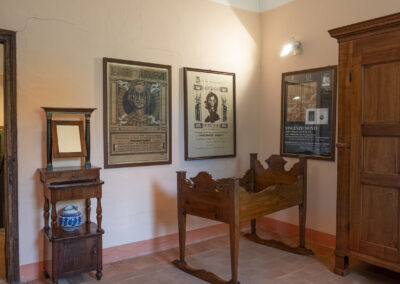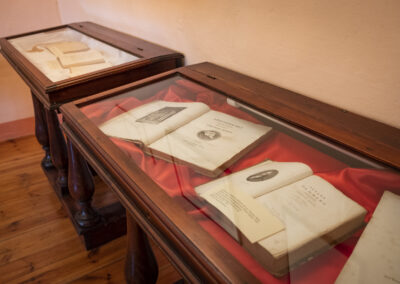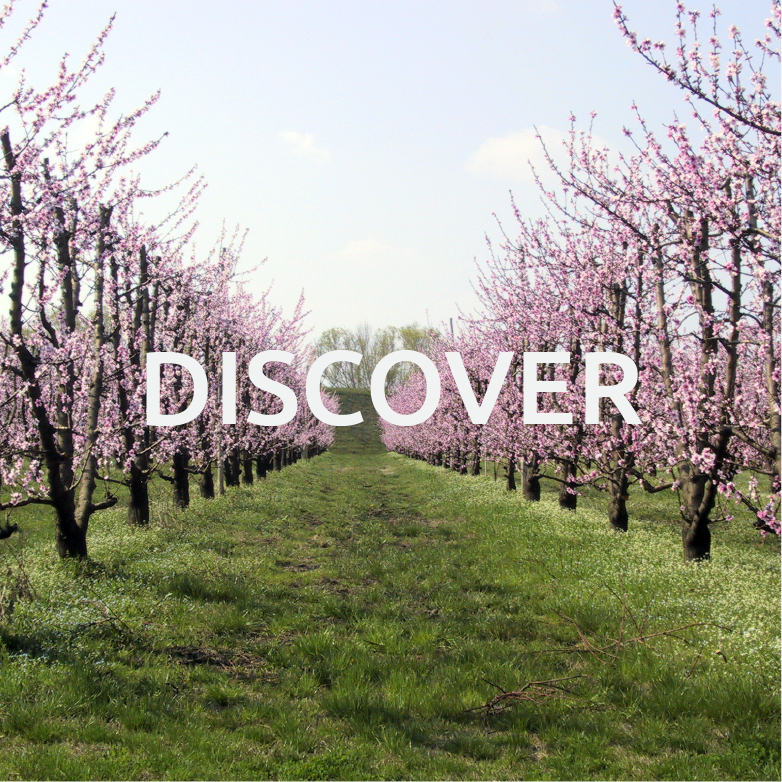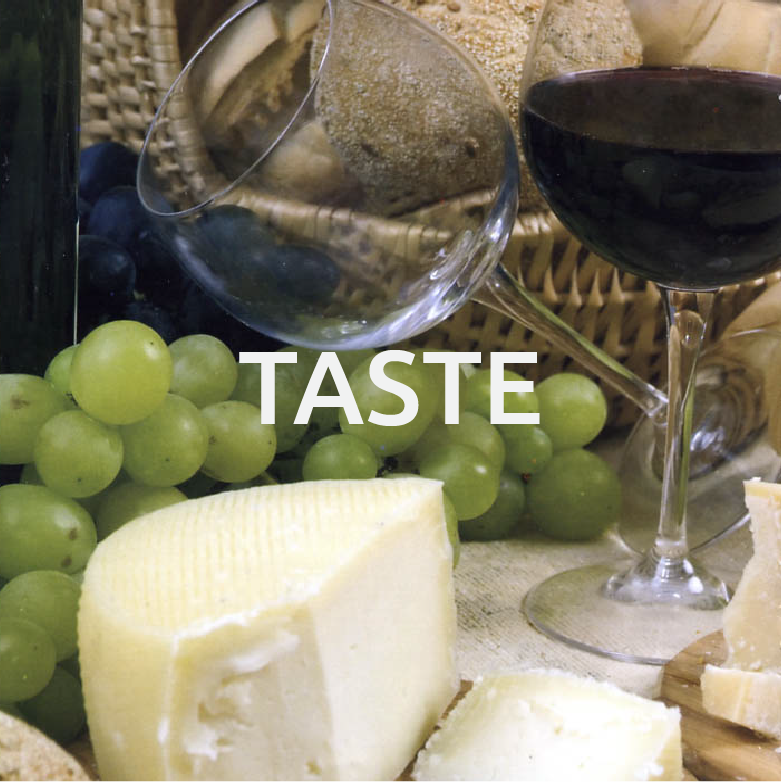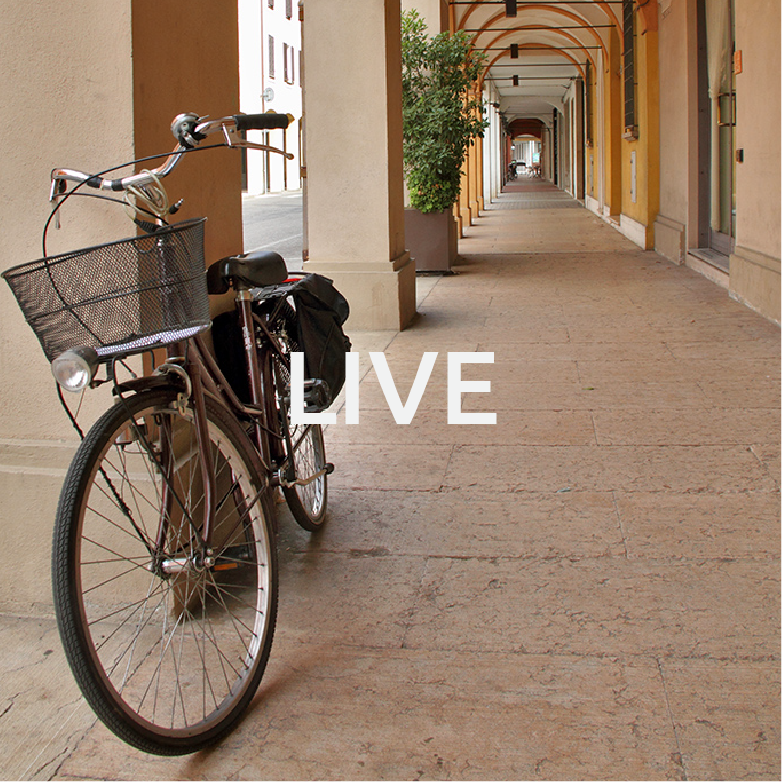Cradles of art, faith and ideas
Museums are a container of artworks that gives us the chance to plunge into the past, realised thanks to the willingness of academics and researchers, who spent a good part of their lives trying to create real itineraries made of art works. This is the case of the collections kept at Museo delle Cappuccine or the devotional ceramics at Museo di San Rocco. As well as this type of collections, there is another way to safeguard the past, which is not limited to objects or tangible evidence, but also preserves intangible values, related to people or events, like Museo Baracca, which shows visitors the life of the hero, Casa Varoli, which is a space full of creative spirit, and also Casa Museo di Vincenzo Monti, where the poet was born and lived and where he gave life to part of his literary work.
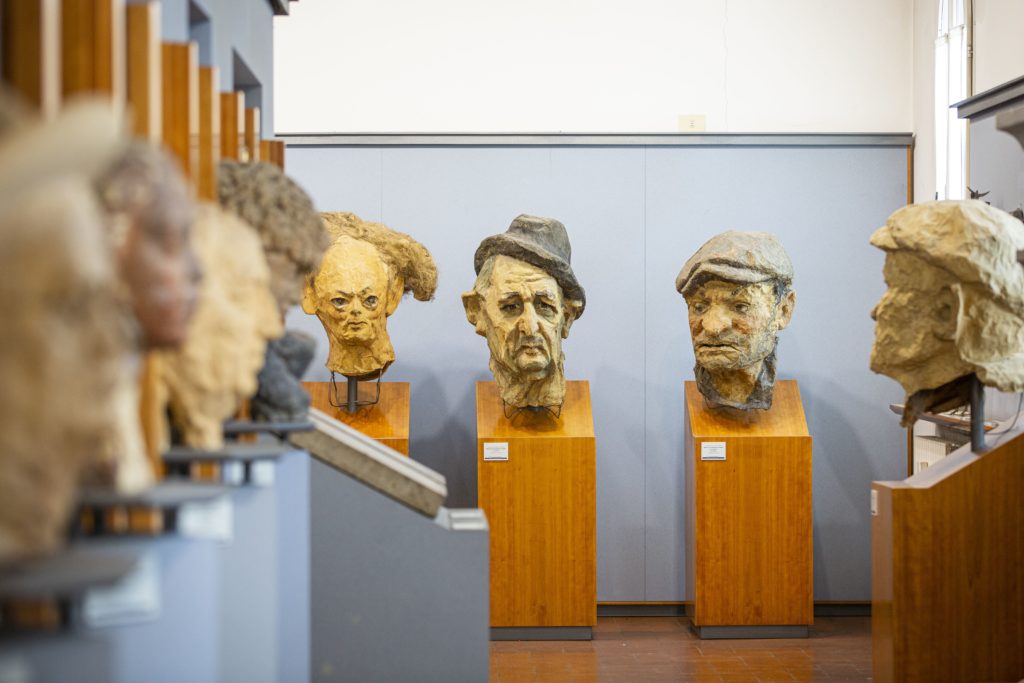
PRACTICAL INFO
INFO
- Interests: culture, knowledge of the territory, history
- Duration: 48 h
- Lenght: 52 km
- Target: Groups, Friends, Couples
- When: All year round
MAP
View the route on google maps
For the most experts – Download the gpx track
The routes can be downloaded and can be managed with any satellite navigator for outdoor use.
You can use telephone Apps enabled to manage information through geolocation.
The files are all in GPX format, the exchange format ,
Download the files, click here
ITINERARY
FIRST STOP
Museo Civico delle Cappuccine – Bagnacavallo
The Order of the Cloistered Capuchin Sisters stayed in this large convent in Bagnacavallo from the end of 18th century until the 70s of the last century. With the disappearance of the religious institution, the Municipality bought the entire complex and converted it into a cultural centrethat hosts the public Library and the Museo Civico delle Cappuccine.
The collection consists of a section dedicated to ancient artworks, from the 13th century, with the Scuola Riminese’s fresco fragment representing the Franciscan St Lodovico da Tolosa, to the end of the 19th century.
A common thread between the beginning of the 20th century and the period after the Second World War is the section dedicated to painter Enzo Morelli (1896-1976).
The modern and contemporary art section hosts a relevant collection of bronze, plaster, terracotta and marble sculptures made by some of the most famous sculptors of the 20th century, like the precious bronze head, Enfant juif by master sculptor Medardo Rosso and Giacomo Manzù’s bronze bas-relief showing the Deposition from the Cross.
The Gabinetto delle Stampe Antiche e Moderne (Cabinet of ancient and modern prints) collects a precious and significant donation of ancient prints, from Dürer up to contemporary authors.
SECOND STOP
Museo Civico Varoli – Cotignola
An entire generation’s artists from our province met and trained in Master Luigi Varoli’s house. Still today these rooms take the visitor into the atmosphere of the artist’s house, animated by animal skulls, quiet puppets, plaster casts, musical instruments, masks, photos of the beginning of the 20th century, votive offerings, wooden crucifixes, ancient furniture and a little but precious library, where Depero Dinamo’s book is the highlight.
Its mysterious fascination extends to the lovely garden full of artefacts. Here it is possible to breathe that particular cultural climate that surrounded this extraordinary artist – a figure that was in a way isolated
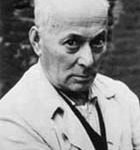
but rooted into his places of origin – through an itinerary that shows the different tensions of his poetics.
Here Varoli knew how to spread his passion and curiosity: his pedagogical vocation and generous energy, which characterized his personality, transformed this house into a point of reference for many artists such as Umberto Folli, Giulio Ruffini, Gaetano Guerrini, Aristodemo Liverani, Ettore and Domenico Panighi, Giovanni Savini, Olga Settembrini, Renzo Morandi, musician Genunzio Ghetti and many others.
These rooms were also a favourable context for the political debate: new ideas and desire for freedom were among the favourite topics. It is not a coincidence that during the dark years of the Fascist government’s racial laws, many Jews saved their lives inside these walls. Master Varoli’ heroic gesture, symbolizing civil and humanitarian engagement, allowed him to receive the title of Just among Nations.
An artist with big human sensitivity, he played the important role of “preserver of the community’s memories”: in his house and yard he collected and protected works of art, furniture, common-use objects and archaeological findings. Some of them are kept today in the new municipal archaeological room.
Right in front of Casa Varoli, on the first floor of Palazzo Sforza, the Municipality of Cotignola created the Museo Varoli, which displays the work left by the Master.
THIRD STOP
Museo Baracca – Lugo
The Museum is located in the ancient mansion of Francesco Baracca’s family: a palace that was refurbished in 1916, according to that eclectic style, contaminated by Liberty details that were very popular at that time – on the cornice there are many decorative elements, crowns with festoons showing the letters “W Trento e Trieste” and bas-relief garlands between the rectangular window-doors with Liberty iron balustrades. A band of enamelled ceramic tiles introduces the bracketed cornice. The museum new setup, from 2015, is enriched by documents, relics, furniture and artefacts that narrate the human story of the sky Hero.
The ground floor is almost fully dedicated to technical topics: at the centre of the narration is the main museum attraction, Baracca’s plane, SPAD VII S2489, of French manufacturing (1917) in such a position as to evoke the idea of flying. On the walls two sentences taken from the Hero’s epistolary of 1912 seem to detach from the wall and fly on air: once recalls the wonders of flying, the other prophesies the glorious future of aviation. There are also some finds of knocked-down planes, chosen by Baracca as examples of the most modern technologies of the time. 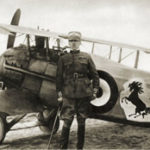 On the first floor, the focus is on training and the survival of the Baracca’s myth, shown through letters, newspapers and several publications. Then the exhibition continues with the Hero’s private life, with the reconstruction of his bedroom, some of his personal objects, such as his medal collection, some certificates and acknowledgements from 1915-1918, together with the words that Gabriele D’Annunzio pronounced by his coffin.
On the first floor, the focus is on training and the survival of the Baracca’s myth, shown through letters, newspapers and several publications. Then the exhibition continues with the Hero’s private life, with the reconstruction of his bedroom, some of his personal objects, such as his medal collection, some certificates and acknowledgements from 1915-1918, together with the words that Gabriele D’Annunzio pronounced by his coffin.
The last floor is dedicated to the Great War propaganda postcards (“Baldini’s Collection, donated) and in a small room, it is possible to admire the reproduction of a trench with the Infantry and Austrian artillery’s equipment, together with artefacts from the First World War, such as helmets, rifles, machine guns…
The city dedicates to Baracca an ideal itinerary, which starts from the Museum, then continues to Monumento all’Eroe (Monument to the Hero), designed and made by the sculptor from Faenza Domenico Rambelli, considered as one of the main expressions of the Italian sculpture of the 20th century and finishes at the city cemetery with the grave chapel, decorated by Roberto Sella from Lugo. Inside the chapel it is possible to admire the majestic sarcophagus cast with Austrian cannon bronze from Carso.
For information click here
FOURTH STOP
Museo Civico San Rocco – Fusignano
Turned into a Museum by the Municipal Administration in 2001, the “San Rocco” complex, which has been the seat of the Municipal Administration for several years, was a place which hosted important meetings and exhibitions.
The building dates back to the 16th century. It was built as Hospitale dè Pellegrini and then it changed its name into Ospedale dei Poveri Infermi. It was submitted to a long and complete restoration. On the ground floor it hosts the beautiful and rich permanent collection of devotional ceramics donated by prof. Sergio Baroni to the Municipality, in memory of his parents. It is a precious and unique collection of more than 200 pieces, which result from the collaboration between a collector like Vincenzo Baroni (the donor’s father) and a refined researcher like Monsignor Antonio Savioli from Fusignano, who passed away in 1999 and who dedicated a long time to studying the Marian iconography on Romagna devotional ceramics. The two of them were united by a close friendship and mutual appreciation.
It is a corpus of images and ceramic pieces produced from the 16th till the end of the 20th century. They represent a complex and rich source of information to reconstruct the history of popular devotion. Characterized by different shapes and dimensions, the ceramics are a figurative expression of the religious popular culture, both from Emilia-Romagna and other Italian regions; there are also two pieces coming from Spain and France. Traditionally the plates were walled up above the entrance door, especially in the countryside, to ask Mary and other Saints to protect the house.
The iconography mainly shows images related to Marian piety, with a surprising variety of subjects: Our Lady of Grace, Our Lady of the Rosary, of Carmel, of Good Counsel, of the Girdle, of the Angel, of Comfort etc. Some others represent Saints relied upon as protectors and auxiliaries: St Anthony Abbot, St Vincent Ferrer, St William, St Christopher, St Filomena, St Anthony of Padua, St Joseph.
Other rarer subjects are: the Nativity, the Holy Family and the crib; while some rare pieces are the Virgin with Child, produced in Rimini back in 1660 and another one produced in Montelupo in 1661.
The earth and the spirit
On the Museum first floor, in 2019 a new exhibition was inaugurated: a journey across the history of Fusignano. Curated by architect Antonio Ravalli, the exhibition aims at narrating the origins and the growth of the town through meaningful images and objects.
The historical journey starts from the birth of Fusignano, showing how men took the land and shaped it; it continues with the topic of lineage in Fusignano, the most famous people (from Arcangelo Corelli to Vincenzo Monti), the destruction caused by the Second World War, the rebirth up to the current time, where people look with confidence to the future, always aware of their past. Together with the historical journey, the artistic part of the exhibition plays tribute to three great local artists: painters Annibale Luigi Bergamini and Francesco Verlicchi and sculptor Raoul Vistoli.
For information, click here
FIFTH STOP
Casa Vincenzo Monti – Alfonsine
In via Passetto rises a palace surrounded by the countryside: built by Matteo Tamburini, in 1737 it was bought by Fedele Monti, the father of poet Vincenzo who was born here. The Monti family kept it until 1914.
The house is inevitably connected to Vincenzo Monti’s destiny (1754-1828); high representative of Italian Neoclassicism, translator of Homer and Voltaire, researcher and reformer of the Italian language, an all-round man of culture who lived in a historical time shaken by exceptional political events (the French revolution, the arrival in Italy of Napoleon Bonaparte, the Restoration…) and who represented the ongoing transformations with his words and thoughts. He was an intellectual and dear friend of Foscolo, admired by Manzoni and Leopardi, he attended the literary salons of Rome, Milan, Paris and became Professor of Eloquence at the University of Pavia.
The building was first restored by the Municipality of Alfonsine in 1954, on the occasion of the two-hundred years’ anniversary of the poet’s birth. A second restructuring phase was made thanks the intervention of industrialist Marino Marini and was ended in 1978. However the work was completed in 1998, in full respect of the 18th century architectonic features and it was then inaugurated in 2001.
The museum tour develops on the main floor. The first room, so-called “cradle room”, displays some original furniture, among which the cradle of the poet’s family stands out. The tour continues with the document room, with a collection of original editions of the poet’s work, which show his career, from the so-called Roman time to the Napoleonic time. These are rare, very limited editions. Among the most interesting works is the famous Bassvilliana, a little poem, composed in 1793, four lyrics in Dante’s tercets which are so refined and elegant that some critics of the time defined Monti as “revived Dante”.
The same room contains some copies of letters exchanged between Monti and a young Manzoni and Leopardi, as well as diplomas and acknowledgements given to the poet by the most famous Italian Literary Academies. The tour continues with Sala Montiana. Set up in 1928 on the occasion of the first centenary of the poet’s death, it represents the core of the Museum: at its centre rises, today like in 1928, the precious marble bust made by Cincinnato Baruzzi, while the decorations are by the painter Marcello Mariani, from Alfonsine. On the walls are some festoons with the titles of the main Monti’s works; on the ceiling are the words of the epitaph written by Manzoni.
For information click here
Fountain Map realised by Ciclo Guide Lugo

